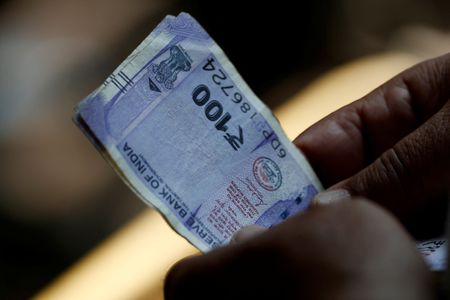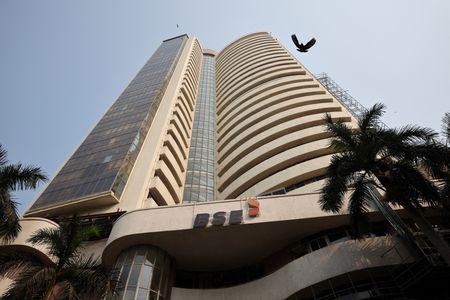By Siddhi Nayak
MUMBAI (Reuters) – The Indian rupee ended little changed on Thursday, wedged between gains in regional peers and importers’ dollar demand, in a week when volatility has risen due to the central bank’s heavy interventions in the foreign exchange market.
The rupee ended at 86.8975 to the U.S. dollar, compared with its close of 86.8925 in the previous session.
The currency has traded in a wide 1.50-rupee band between 86.50 and nearly 88 so far this week.
The Reserve Bank of India (RBI) is believed to have intervened heavily on Monday to prevent the rupee from breaching 88 per dollar and then again on Tuesday for further support.
These unexpected and aggressive interventions have led to a spike in volatility and pick-up in options volumes.
“The RBI’s interventions have supported the sentiment around the rupee, where the domestic unit remains underpinned by the 87.20 mark in the near term even as volatility has surged,” said Sugandha Sachdeva, founder of SS WealthStreet, a New Delhi-based research firm.
“A large-scale appreciation beyond 86 could be challenging in the near term.”
India’s sluggish economic growth, the recent RBI interest rate cut, foreign outflows from local stocks and uncertainty around U.S. President Donald Trump’s stance on tariffs have spurred bearish bets on the rupee.
“Since the rupee has already gained quite a bit this week, it is unable to build on the rally that other Asian currencies are seeing,” a trader with a private bank said.
The Thai baht and South Korean won were up 0.9% and 0.6%, respectively, amid a rise in Asian currencies on bets that the war in Ukraine was nearing an end after Trump held separate talks with the presidents of Russian and Ukraine.
The dollar index slipped 0.2% to 107.68, after climbing to 108.50 on Wednesday.
(Reporting by Siddhi Nayak; Editing by Savio D’Souza)









